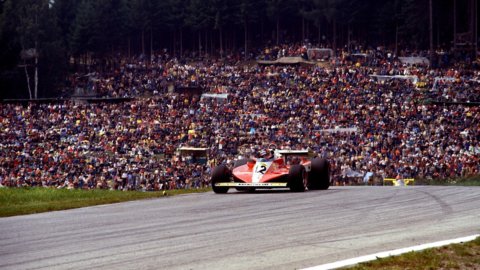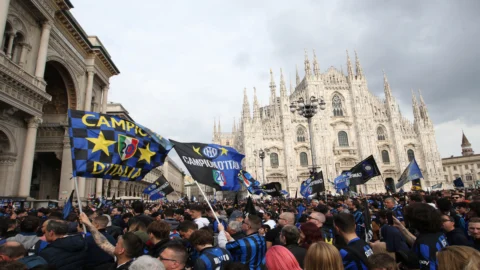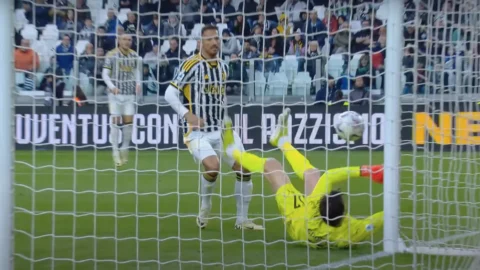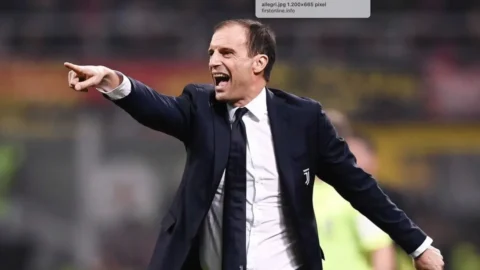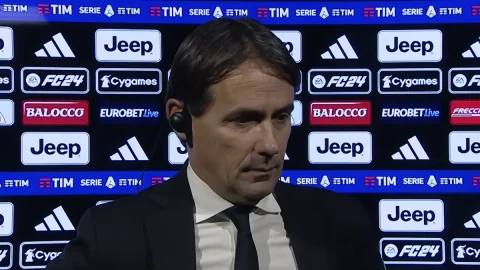From 4 May to 22 July 2018, the Monza Eni Circuit Museum hosts the exhibition Gilles Villeneuve. The myth that does not die, which traces the human and sporting story of one of the public's most loved drivers, whose tragic accident on the Belgian circuit of Zolder in 1982 only put an end to a short but intense career, leaving generations of enthusiasts with the memory of a man who overcame difficulties with his courage and which placed him in the legend of speed.
The exhibition, curated by Ercole Colombo and Giorgio Terruzzi, organized and produced by ViDi, in collaboration with the Autodromo Nazionale Monza SIAS SpA, the Automobile Club Milano and the Gilles Villeneuve Museum of Berthierville, with the patronage of the Municipality of Monza and the Reggia di Monza , presents over 150 photographs by Ercole Colombo, one of the most popular sports reporters, a life spent in Formula 1 behind the lens of his reflexes, used to portray the heroes of the wheel in the intense moments of the race and in those of private life.
The exhibition is enriched by some images from the Villeneuve Museum in Berthierville in Canada, by a video created for the occasion with a testimony by Mauro Forghieri, historic Ferrari engine engineer, as well as by a section with other objects and memorabilia linked to the myth by Villeneuve.
The exhibition itinerary follows a double channel, in which the images of Colombo are counterpointed by the texts of Terruzzi who accompany the visitor along the biographical story of Villeneuve.
The story, in fact, starts right from 1950, the year of Gilles' birth, and analyzes the period of his youth, when he begins to articulate his passion for engines, through night raids driving his father's cars, participating in the first races of acceleration, then competing with snowmobiles, thanks to which he begins to build a certain notoriety. 1973 is his debut in the world of single-seaters: Formula Ford, Formula Atlantic, Formula 2, up to his debut in Formula 1 with a McLaren, in the British Grand Prix.
We are in 1977, the year that will upset his existence and his career. On 29 August, in Maranello, Villeneuve met Enzo Ferrari for the first time who, in the midst of a stormy divorce from Niki Lauda, wanted to reaffirm the supremacy of his cars over the driver. The negotiation is short: Gilles makes his debut on the red, on October 9, in Canada.
“When they introduced me to that little Canadian – Enzo Ferrari recalled -, all nerves, I immediately recognized Nuvolari's physique in him and I said to myself: Give it a chance".
With his photographs, Ercole Colombo fully captures the emotion of the moment. The exhibition also brings together the most significant and unpublished images of a dazzling career: from the first, sensational accidents that led to the nickname 'Aviator' - given that Gilles seemed to want to spend more time in the air than on the asphalt - to the first victory, obtained on the circuit at home in 1978, in the epic duel with René Arnoux in the French Grand Prix in Dijon, 1979. A long sequence of overtaking, gambles, skids, and contacts that gave rise to the "Villeneuve Fever" among Ferrari fans that will never leave them.
Ercole Colombo, in addition to documenting his experience on the track, bears witness to the birth of a living legend, a hero of our times, loved and admired for his all-high-pitched and exaggerated style, such as the record of 2 hours and 45 minutes from Montecarlo to Maranello. “He did everything at 300 km/h – recalled Patrick Tambay, who took over his seat after his death – Skiing, driving a motorboat or playing backgammon”.
The exhibition continues with the reconstruction of his annus horribilis, 1982, with the moral slap received by teammate Didier Pironi who, in contravention of team orders, overtook him on the last lap of the Imola Grand Prix, until the tragic and last flight at Zolder which marked the end of his young life and closes ideally with the room dedicated to his son Jacques, who has completed a sort of family mission, conquering a historic trio of victories: the American Kart championship, the Indianapolis 500 and, finally, the world championship of Formula 1, in 1997.
The exhibition itinerary also presents an unpublished section that houses a faithful reconstruction of the context of Villeneuve's professional life, with the Formula 1 racing cars and the curve of a circuit, entirely built in Lego® bricks, which is linked in an ideal twinning with the exhibition Star Wars is back!, running until 30 September at Villa Mirabello, in the heart of Monza Park, which offers four dioramas, made up of over a million bricks and inhabited by more than two thousand minifigure.
The work, born from the imagination of Wilmer Archiutti, is conceived and produced by LAB Literally Addicted to Bricks creative laboratory of Roncade, in the province of Treviso.
Image: Ercole Colombo, Gilles Villeneuve, Austrian GP, 1978

